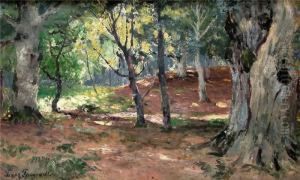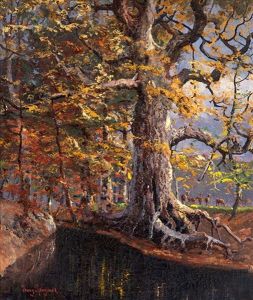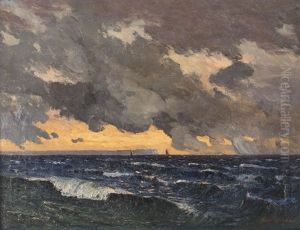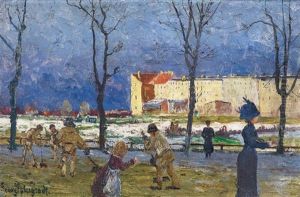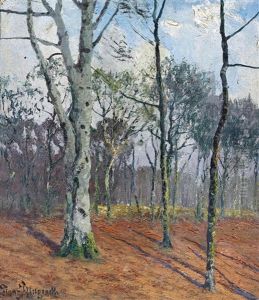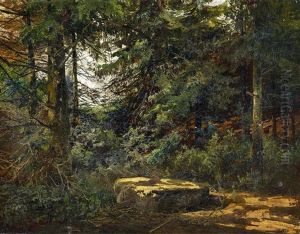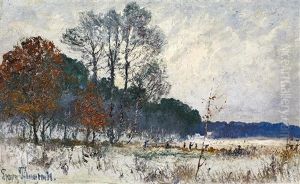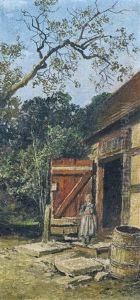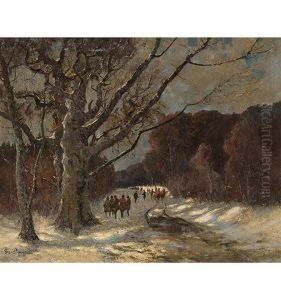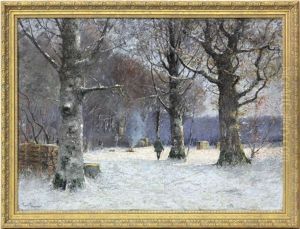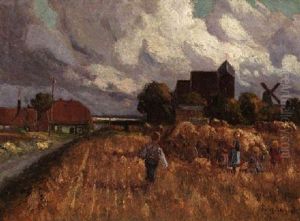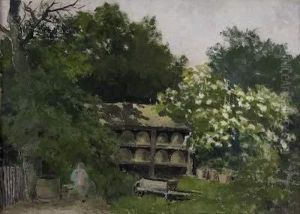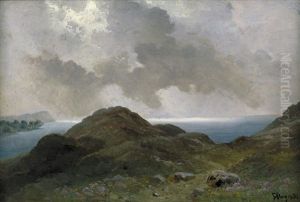Franz Pflugradt Paintings
Franz Pflugradt was a German landscape painter born on November 10, 1861, in Neidenburg, which at the time was part of the Kingdom of Prussia (now Nidzica, Poland). He was primarily known for his realistic depictions of rural landscapes in East Prussia. Pflugradt's work often captured the tranquil beauty of the countryside, reflecting the traditional pastoral scenes that were prevalent in 19th-century European art.
Pflugradt's education and artistic training took place in Königsberg (now Kaliningrad, Russia), where he studied at the Kunstakademie (Academy of Arts) under the guidance of the landscape painter Ludwig Dettmann. Dettmann's influence is evident in Pflugradt's attention to detail and his ability to convey the atmospheric mood of a scene. After completing his studies, Pflugradt embarked on a career as a professional artist, exhibiting his works at various art shows and gaining a reputation for his landscape paintings.
Throughout his career, Franz Pflugradt remained deeply connected to his native East Prussia. His paintings often depicted the region's lakes, forests, and farmlands, capturing the changing seasons and the play of light across the landscapes. He was skilled at using color and light to create depth and realism in his work, and his paintings were celebrated for their serene and contemplative qualities.
Unfortunately, Pflugradt's life and career were cut short by the turmoil of World War I. He passed away on June 20, 1916, in Landsberg an der Warthe (now Gorzów Wielkopolski, Poland), during a time of great upheaval in Europe. Despite the relatively short span of his career, Pflugradt left behind a body of work that continues to be appreciated by art enthusiasts and collectors who value the traditional landscape genre. His paintings serve as a historical record of the East Prussian landscape that underwent dramatic changes during and after the war.
After his death, Pflugradt's artwork continued to be exhibited and sold, although he did not achieve the same level of fame as some of his contemporaries. Nevertheless, his work is representative of the landscape art of his time and provides a window into the rural beauty of a region that has since experienced significant historical changes.

